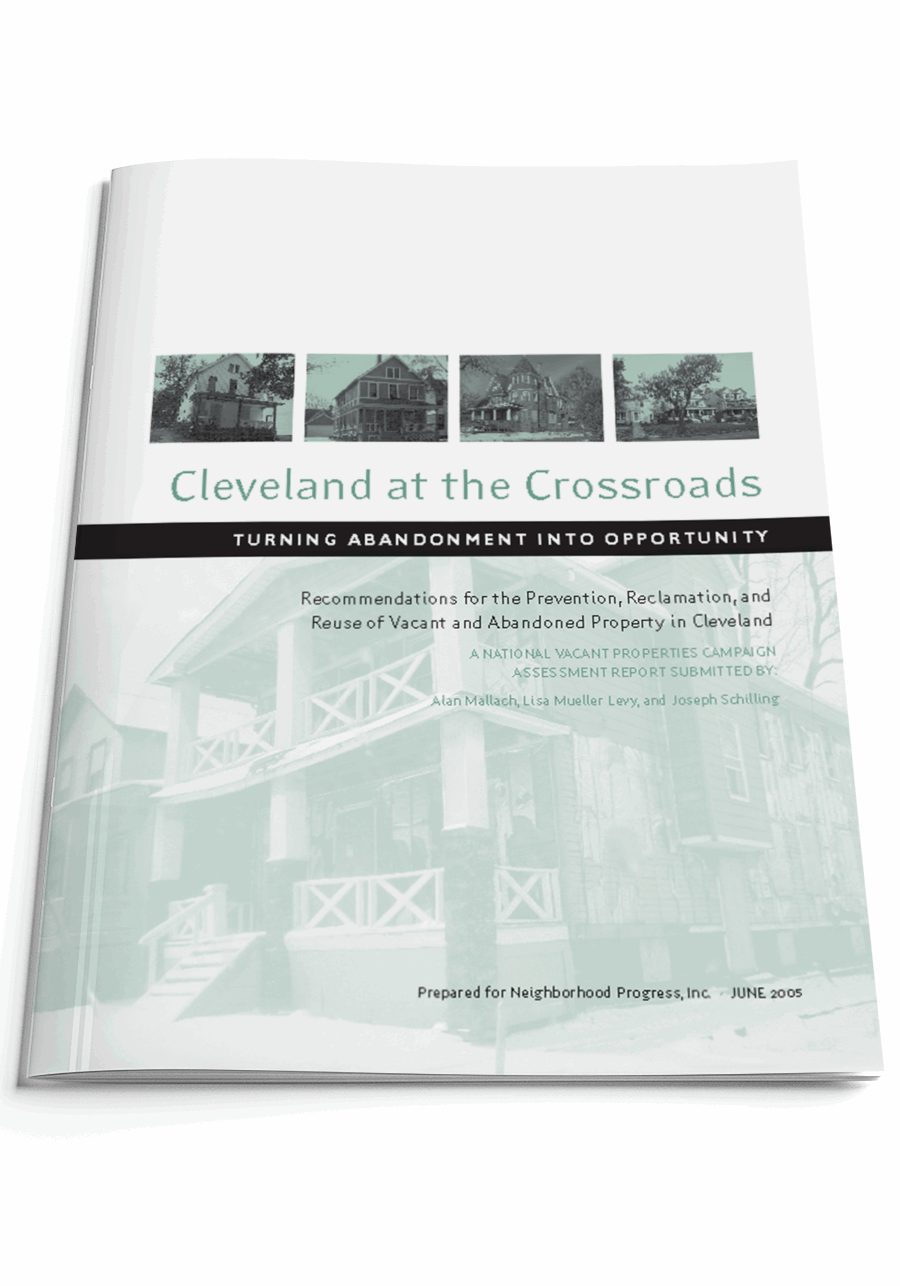Cleveland at the Crossroads
Turning Abandonment into Opportunity
Published: June 2005
Geography: Ohio
Author(s): National Vacant Properties Campaign
At the request of Neighborhood Progress, Inc. (Neighborhood Progress), a team of practitioners and experts from the National Vacant Properties Campaign (NVPC) carried out a strategic assessment of the systems in place for returning the city of Cleveland’s vacant, abandoned, and blighted properties to productive use. NVPC interviewed more than 50 individuals and reviewed numerous reports and documents, starting with a study visit in April 2004. Neighborhood Progress convened an informal steering committee of local vacant property practitioners, representing community development nonprofits and intermediaries, local universities, and local government officials and staff to help guide the assessment process. The steering committee met periodically over the course of nine months to provide us with input and feedback on our report and preliminary findings. This assessment report synthesizes our research and summarizes recommendations.
The report makes the following recommendations:
1. Build public awareness of the severity and the economic and social costs of the vacant and abandoned property problem in the city of Cleveland.
2. Foster interdepartmental cooperation within city government by creating an interdepartmental vacant property working group that can coordinate city activities (and perhaps resources) to implement vacant property strategies.
3. Create an ongoing vacant property committee or revitalization task force that brings together city and county government, intermediaries, CDCs, and others to act as a catalyst for change and track progress.
4. Create smaller, targeted working groups around specific priority elements of the strategy that cut across city departmental or organizational lines.
5. Build a state-wide coalition for vacant property law reform.
Under each of these essential steps, the report explains the critical challenges and
provides potential strategies for improving Cleveland’s ability to address vacant and
abandoned property, while highlighting programs and strategies from other U.S. cities
that may be models for Cleveland’s future efforts.
Subscribe to join 14,000 community development leaders getting the latest resources from top experts on vacant property revitalization.

